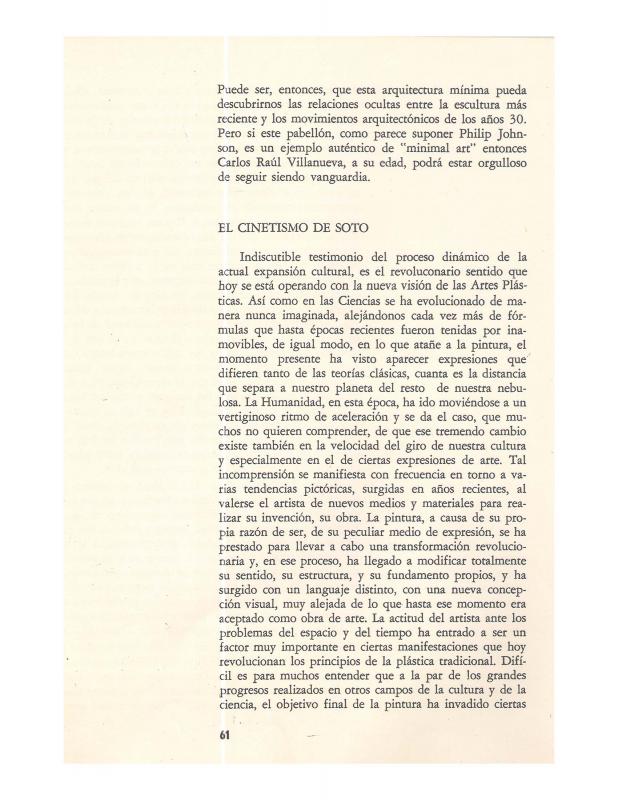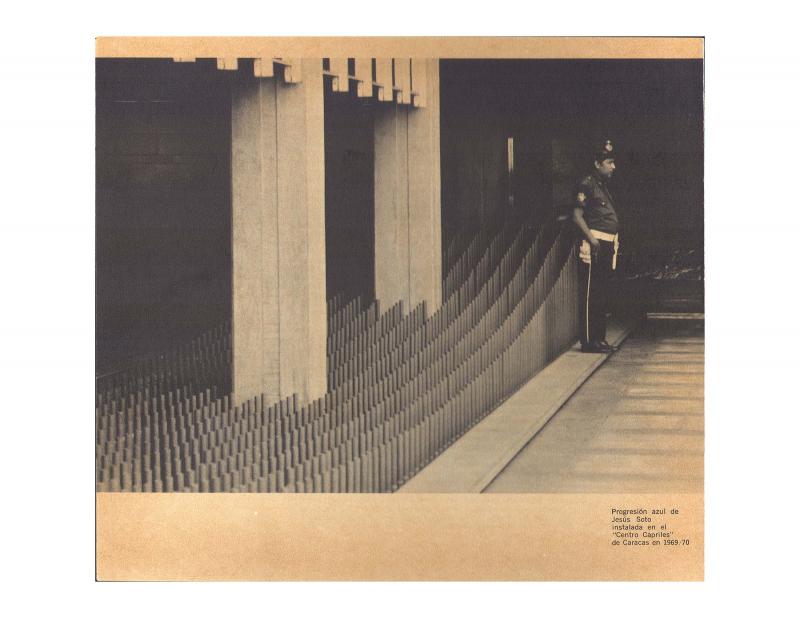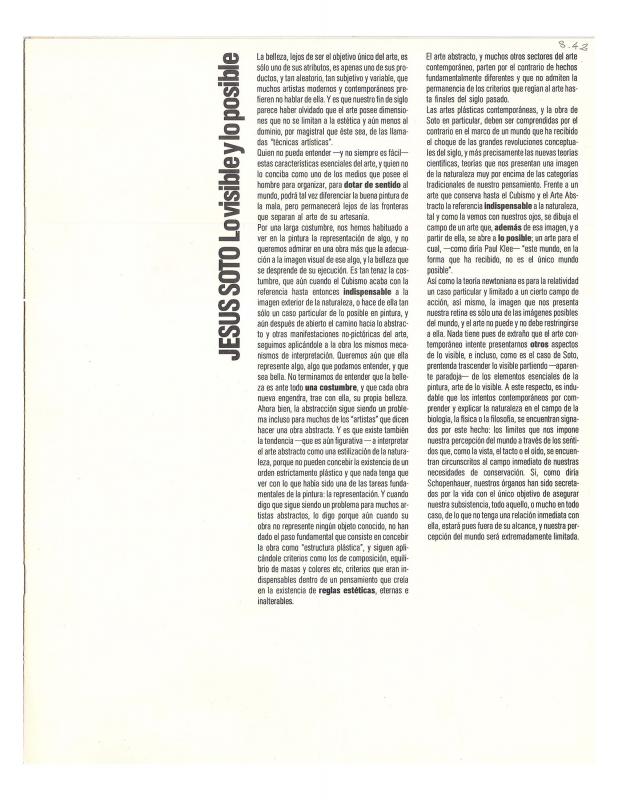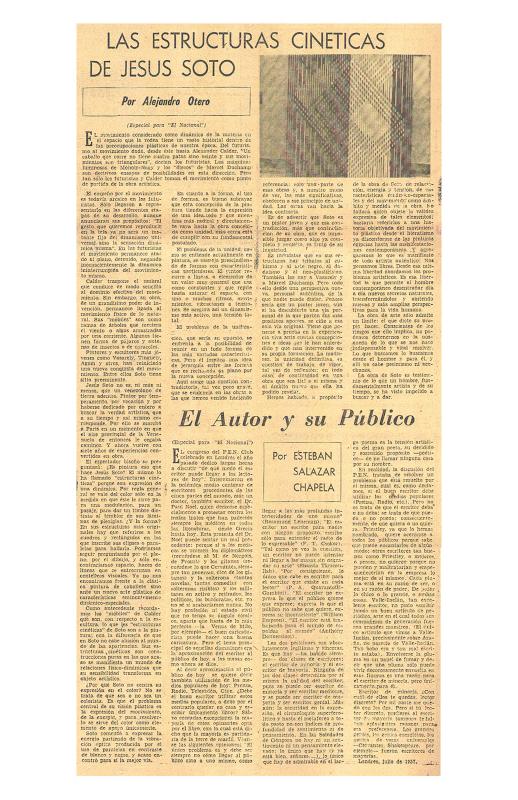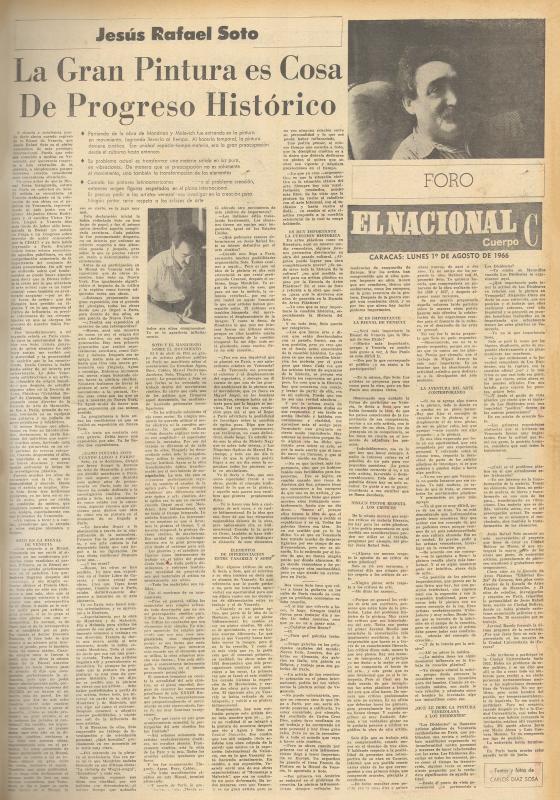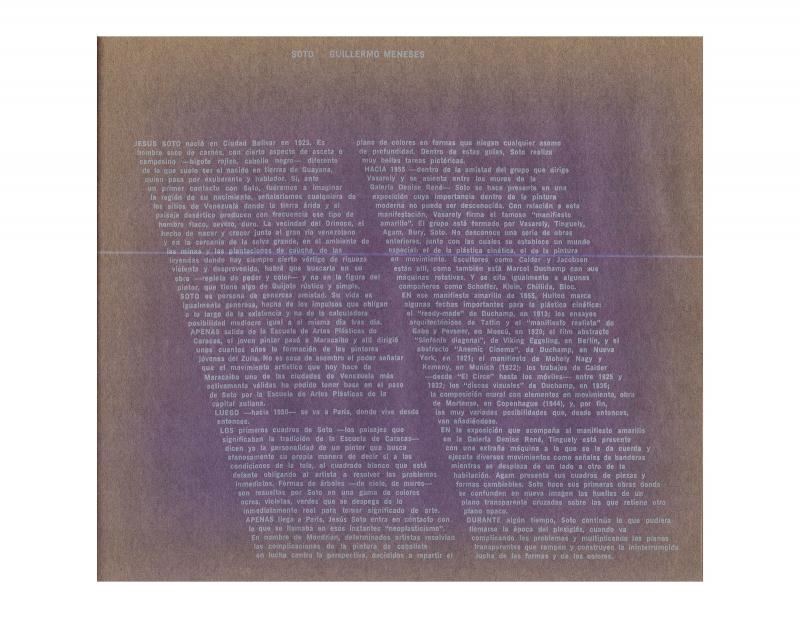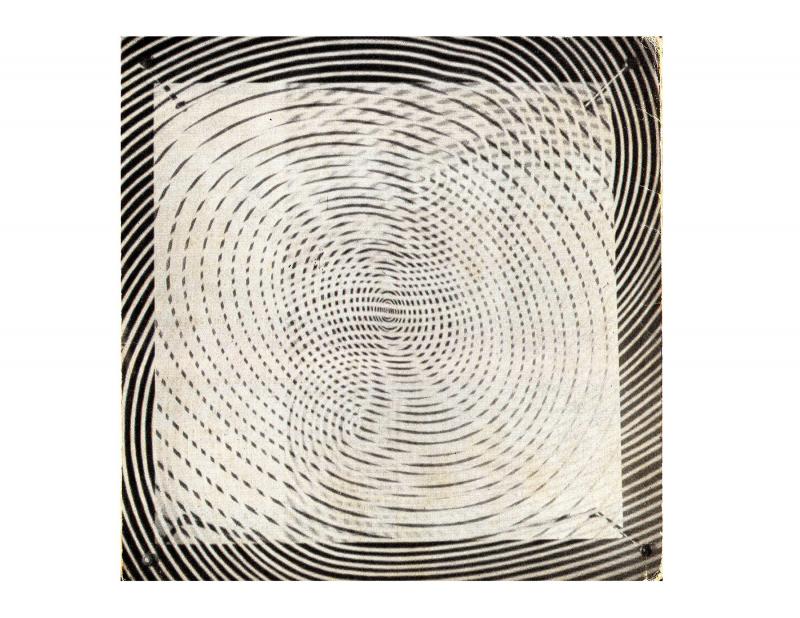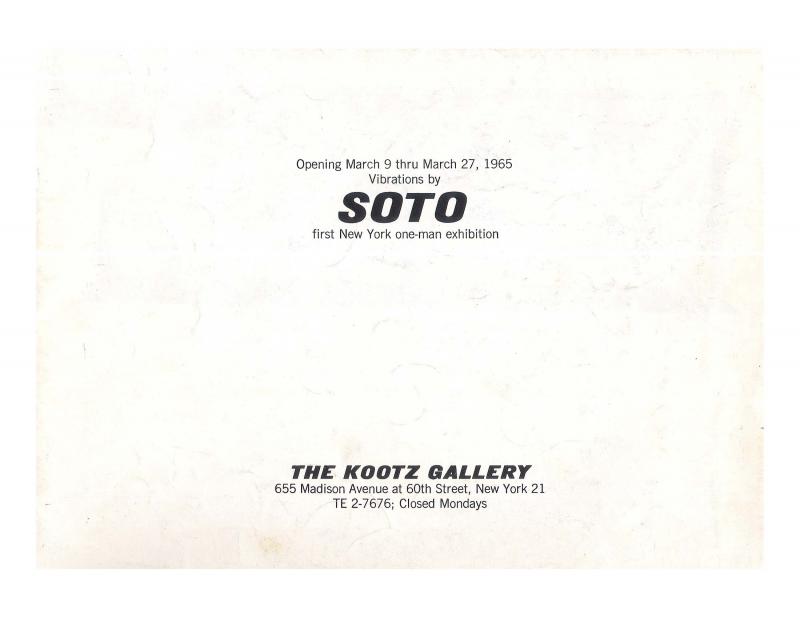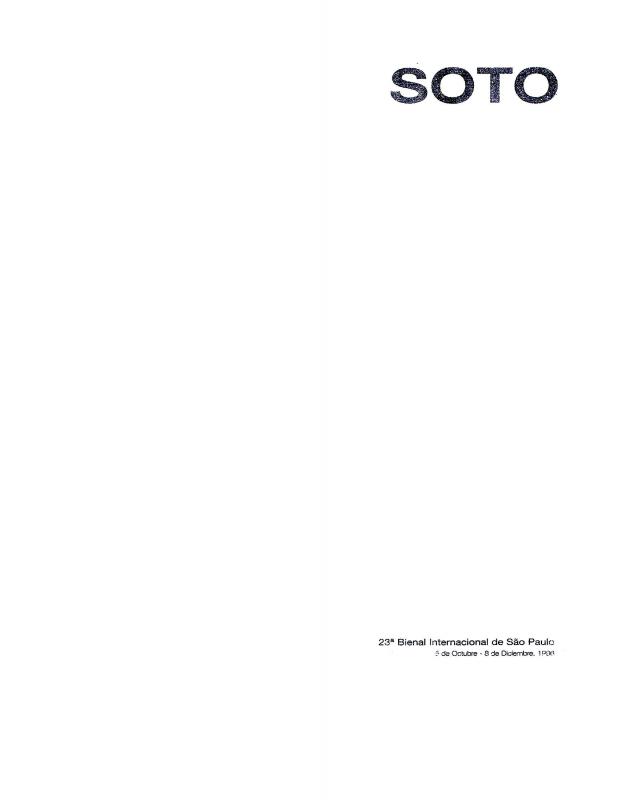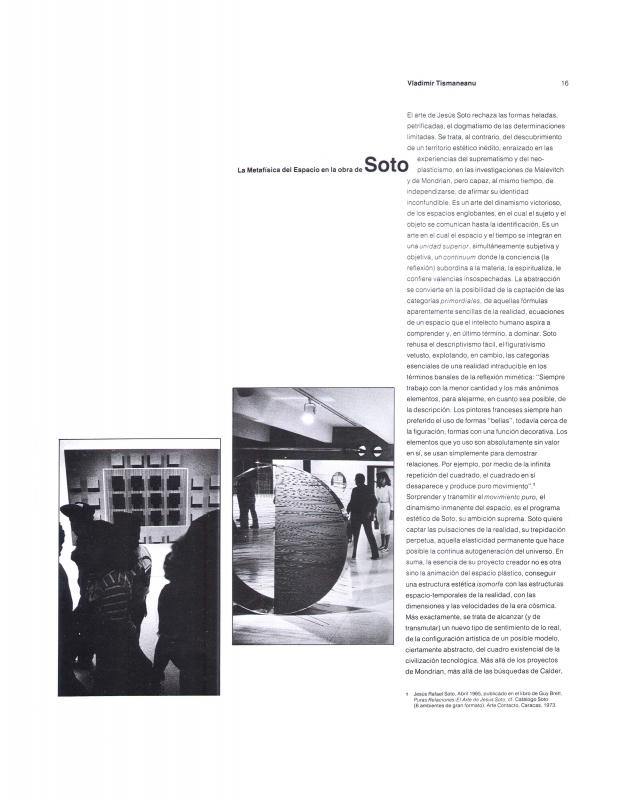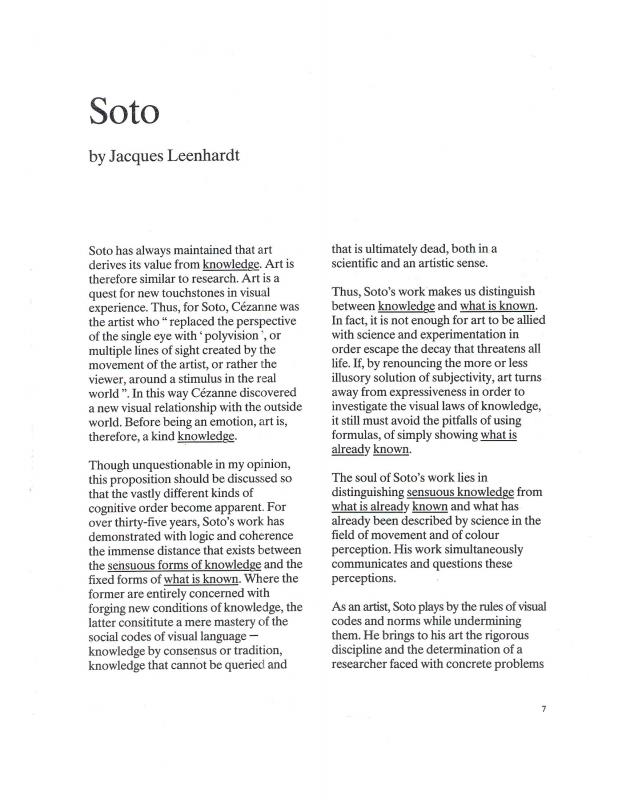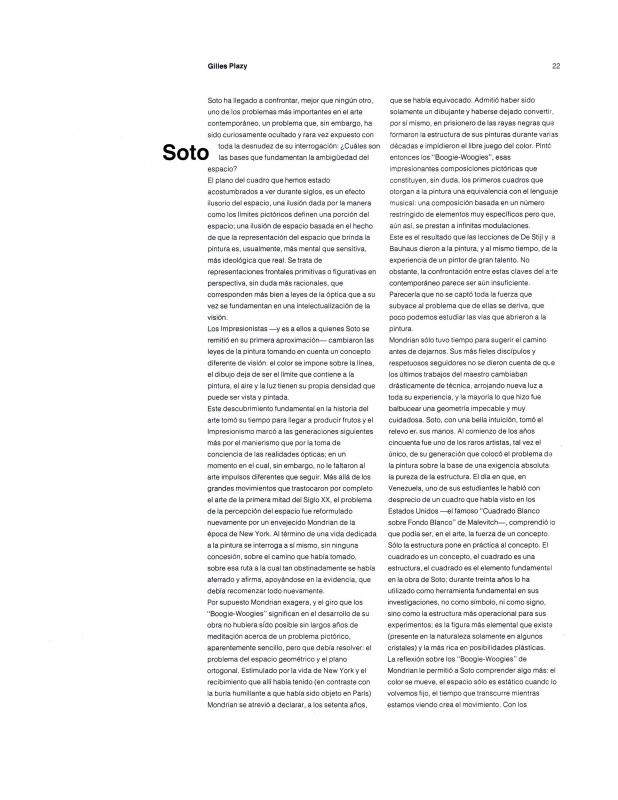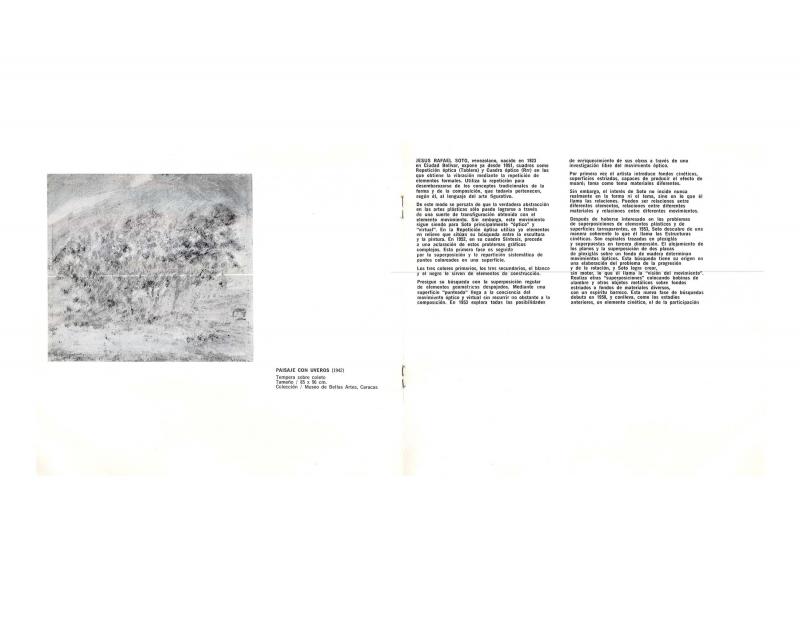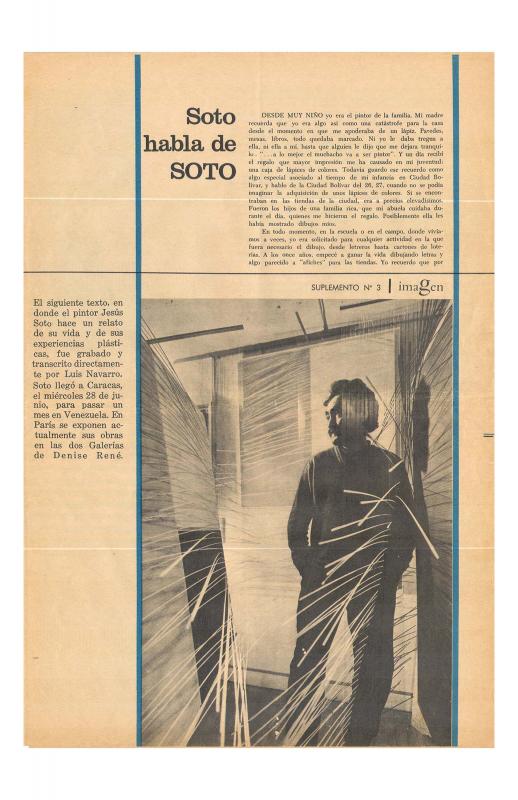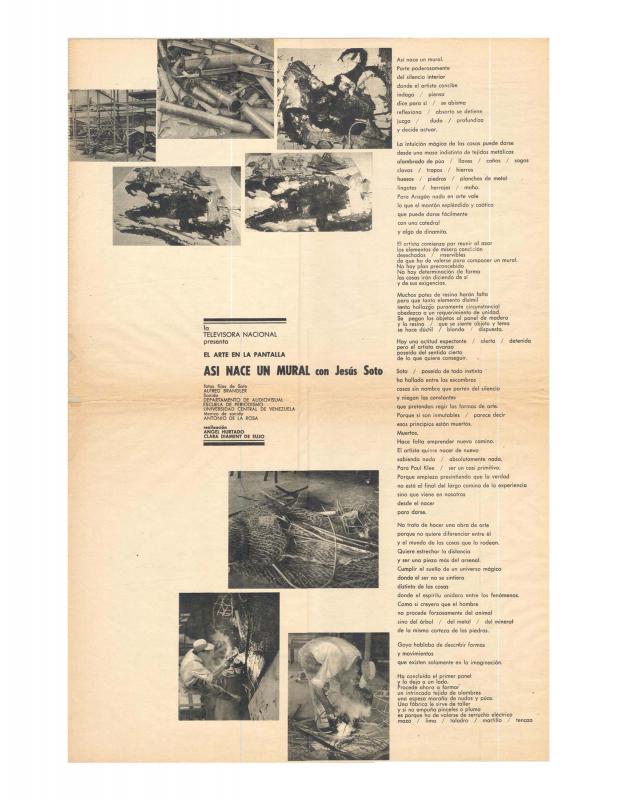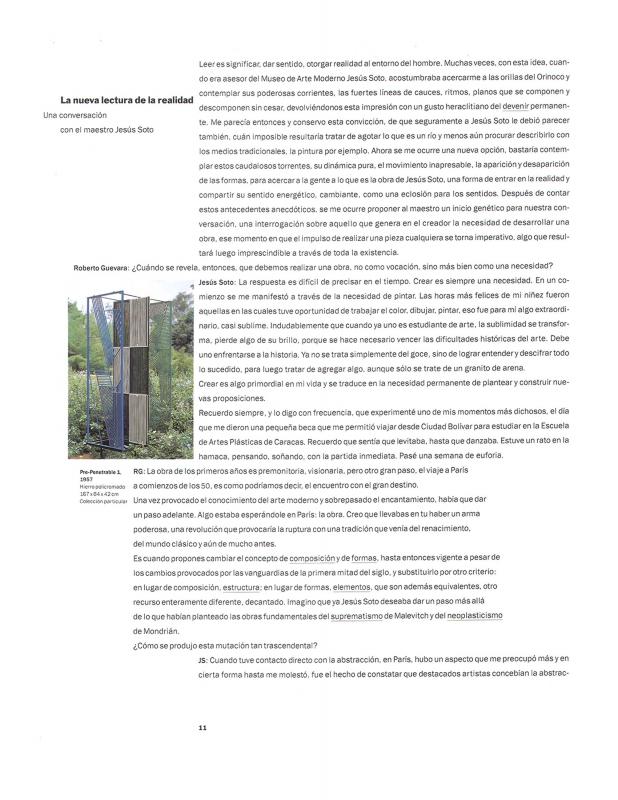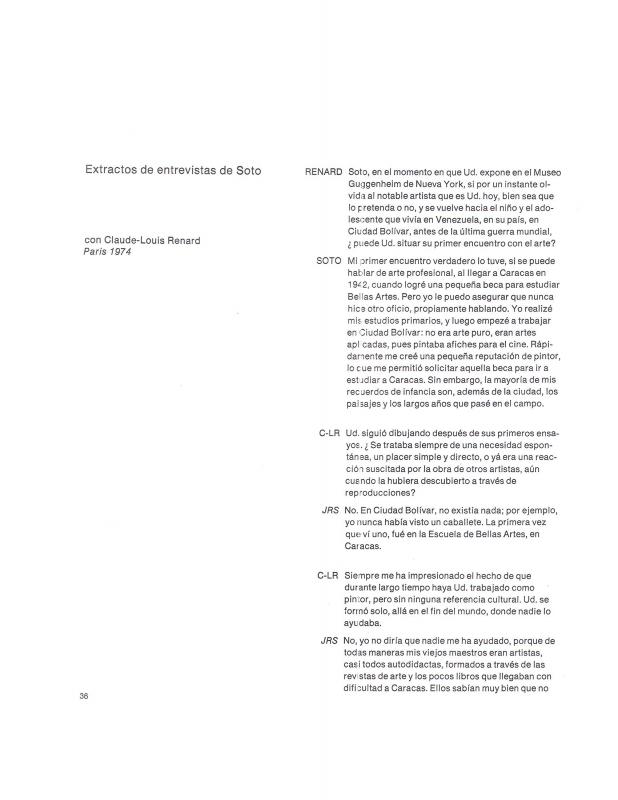This essay by the Venezuelan historian, photographer, and art critic Alfredo Boulton (1908–95) appeared in the catalogue for Soto: Cuarenta Años de Creación 1943–1983, the exhibition that was held at the Museo de Arte Contemporáneo de Caracas (July 1983). This was the first time that Jesús Rafael Soto (1923–2005) had exhibited at that institution. At that point in time, Soto was already an acclaimed member of the abstract Kinetic Art movement and—although he never stopped experimenting—he was no longer working in a truly abstract style, an approach that was devoid of any trace of figuration and far removed from the controversial ideas concerning the validity of abstraction as a new way of seeing art. According to Boulton, Soto’s prominent use of space (“the void”) is an essential facet of his work, granting greater importance to links between elements than to combinations thereof.
Boulton was one of the most prolific writers on the subject of Soto’s work. In addition to the monograph he published in 1973, he wrote many essays for exhibition catalogues. On the whole, and to avoid repeating himself, the central theme of his discourse revolved around one specific feature in his creative work, which involved the use of space and time as pictorial elements. Soto had already expressed his opinion concerning the use of the so-called “fourth dimension”—time in his work—and the spatial relationships between the component parts. According to the Venezuelan Kinetic artist (who settled in Paris in the 1950s), relevant space is “the void” that moves between one element and another, but not the one that the elements themselves occupy.
[For other texts about Soto, see the following in the ICAA digital archive: by Alfredo Boulton, “El cinetismo de Soto” (doc. no. 1069749), and “Jesús Soto 1971” (doc. no. 1059661); by Ariel Jiménez, “Jesus Soto: Lo visible y lo posible” (doc. no. 1073684); by Alejandro Otero, “Las estructuras cinéticas de Jesús Soto” (doc. no. 850667); by Carlos Díaz Sosa, “Jesús Rafael Soto: La Gran Pintura es cosa de progreso histórico” (doc. no. 1097076); by Guillermo Meneses, “Soto” (doc. no. 1080690), and “Soto: Estructuras cinéticas” (doc. no. 1059619); by Umbro Apollonio, (untitled) [published in the catalogue “Vibrations by Soto” by The Kootz Gallery 1965] (doc. no. 1069781); by Roberto Guevara, “La energía como realidad” (doc. no. 1102332); by Vladimir Tismaneanu, “La metafísica del espacio en la obra de Soto” (doc. no. 1101524); the philosophical piece “Soto,” by Jacques Leenhardt (doc. no. 1073536); and under the same title, “Soto,” the one by the French intellectual Gilles Plazy (doc. no. 1101556); see also the analysis (untitled) [Jesús Rafael Soto...] by the Czech-French theorist Frank Popper (doc. no. 1073597); the artist’s autobiography, “Soto habla de Soto” (doc. no. 1080906). See also the script of the documentary with the same title, “V: Así nace un mural con Jesús Soto,” written by Clara Diament Sujo and produced by the filmmaker Ángel Hurtado (doc. no. 1168365). Finally, see the interviews conducted by Roberto Guevara, “La nueva lectura de la realidad: Una conversación con el maestro Jesús Soto” (doc. no. 1059731); and by Claude-Louis Renard, “Extractos de entrevistas de Soto [Paris, 1974]” (doc. no. 1080788)].

